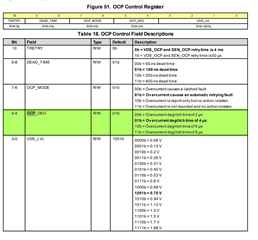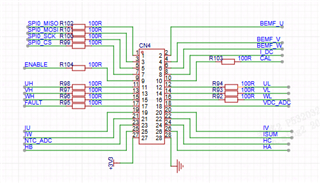Other Parts Discussed in Thread: DRV8323
Tool/software:
Hi,
I am currently learning to use the DRV8323.When I input the three-channel complementary PWM waves to the DRV8323, the data read from the Fault Status Register was 0x0604, which means that the VDS overcurrent monitoring has been triggered.I have set the 0-3 bits of the OCP control register to 1111, which represents the maximum VDS voltage. However, the error still occurred. The voltage at the nFault pin has also dropped from 3.3V to 2V.
I'm sorry, I'm a rookie and currently I don't have any clear troubleshooting ideas. So, could anyone give me some hints and tell me where I should check?By the way, I only modified the value of the OCP register.
Thank you so much!it is very important to me.
Best wishes,
huan yin






